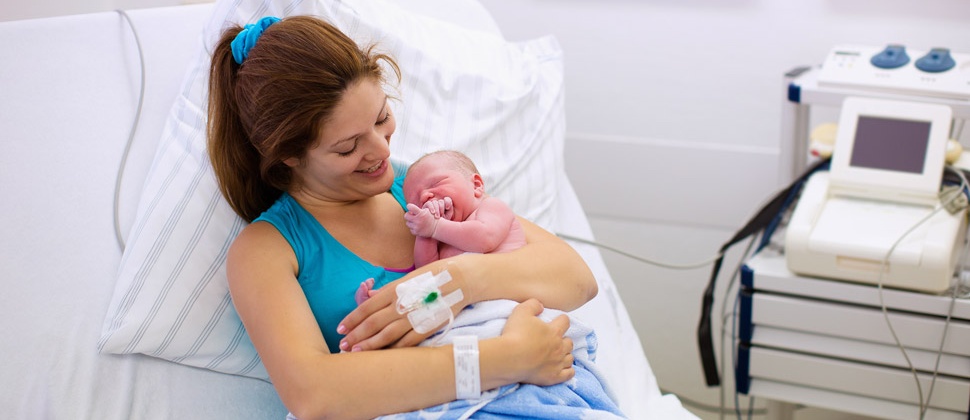How have the timings of birth changed over time? Why might this be and does it matter?

These were, in short, the questions addressed by a study with the formal title ‘Births and their outcomes: analysing the daily, weekly and yearly cycles. A retrospective birth cohort data linkage study’.
What is this research about?
Until 2005, there were no national data for England and Wales on the time of birth. Since then, ‘birth notification’ data have been collected routinely and held in national data systems, including the time that every birth occurred.
It is known that ways of birth have been changing, with increasing use of obstetric interventions. The study was designed to answer questions including:
- What are the timings of births throughout the day and on different days of the week, and did these change over the 10 years to 2014?
- How does mode of birth influence the timing of births?
- What are the implications for NHS maternity and neonatal services?
- Is the health and wellbeing of babies (neonatal outcomes) influenced by timing of birth?
In order to answer these questions, the study linked together three sources of routinely collected data in England and Wales for the years 2005-2014 to answer. These were 1) Hospital episode statistics (HES in England PEDW in Wales) mainly clinical data about labour and birth, 2) birth registration data, mainly demographic data such as class, parents’ marital status and country of birth, and 3) birth notification data, including time of birth, gestational age and the ethnicity of the baby. Babies’ NHS numbers, issued at birth enable links to be made and verified.
The study authors are Alison Macfarlane, Nirupa Dattani, Rod Gibson, Gill Harper, Peter Martin, Miranda Dodwell, Mary Newburn and Mario Cortina-Borja
Why is this research important?
Maternity care has to be available 24 hours a day, seven days a week. It is known that obstetric intervention can influence the time of birth, but no previous analysis showed how births were distributed throughout the day and night and across the entire week, 52 weeks of the year.
The study would explore, for example, the patterns of caesarean births, for while it was known that the rising rates of elective caesarean section have concentrated increasing numbers of births onto weekday mornings, precise timings and the full national picture were unknown.
Also, it would explore the patterns of induced births. The rationale for increasing rates of induction in the 1970s was to concentrate births into day time hours. Does induction of labour lead to more births during day time hours in practice?
There may be implications for the quality of care, babies’ health, and staffing of services.
How is NCT involved?
NCT was involved from the beginning of the study. Mary Newburn assisted in the writing of the funding application and in particular the design of the ‘public and patient involvement’ (PPI) elements of the study, and the writing of the final report. Miranda Dodwell, Senior Research Fellow, Maternity Service User Representative, founder of BirthChoiceUK, formerly an NCT antenatal teacher and an active NCT research networker, also took part in the project as a subject expert and service user researcher. She devised and quality assured the assigned codes for NHS trusts and contributed to writing the report. Mary’s role included recruiting service users for the study advisory group and organising annual meetings with NCT members on Maternity Services Liaison Committees (later to become Maternity Voices Partnerships) to engage and involve service users and local advocates and other interested stakeholders in the research.
A full account of all of these PPI meetings is included in the final report.
What is the current status of the research project?
The full end of project report has now been published on the National Institute for Health Research - view the full report.
The first journal article published was:
Martin P, Cortina-Borja M and Newburn M et al. Timing of singleton births by onset of labour and mode of birth in NHS maternity units in England, 2005–2014: A study of linked birth registration, birth notification, and hospital episode data https://journals.plos.org/plosone/article/file?id=10.1371%2Fjournal.pone.0198183&type=printable&fbclid=IwAR2I3pQlCaEB98R5wh7bGXBD7fWO It analysed 5,093,615 singleton births in NHS maternity units in England from 2005 to 2014 to establish how patterns of timing of birth vary by onset of labour (ie spontaneous, induced, no labour) mode of giving birth (spontaneous, instrumental with forceps or ventouse, planned or emergency caesarean) and by gestational age.
Results: The timing of birth by time of day and day of the week varies considerably by onset of labour and mode of birth. Spontaneous births after spontaneous onset are more likely to occur between midnight and 6am than at other times of day, and are also slightly more likely on weekdays than at weekends and on public holidays. Elective caesarean births are concentrated onto weekday mornings. Births after induced labours are more likely to occur at hours around midnight on Tuesdays to Saturdays and on days before a public holiday period, than on Sundays, Mondays and during or just after a public holiday.
Other journal articles include:
Dattani N, Macfarlane AJ. Linkage of Maternity Hospital Episode Statistics data to birth registration and NHS Numbers for babies records in England 2005–2014: methods. A population based birth cohort study. BMJ Open. 2018; 8: e017897. https://doi.org/10.1136/bmjopen-2017-017897 PMID: 29449289 36.
Harper G. Linkage of Maternity Hospital Episode Statistics data to birth registration and notification records for births in England 2005–2014: quality assurance of linkage of routine data for singleton and multiple births. BMJ Open. 2018; 8: e017898. https://doi.org/10.1136/bmjopen-2017-017898 PMID: 29500200
For more information about this project, please contact Mary Newburn at mary.newburn@kcl.ac.uk



